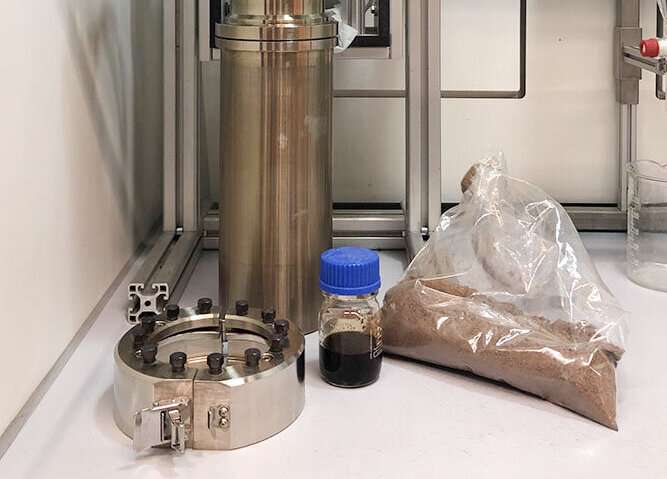Chemical process breaks down lignin and turns birch wood into usable chemical products
by Bob Yirka
A team of researchers affiliated with multiple institutions in Belgium has developed a chemical process that breaks down lignin and turns birch wood into usable chemical products. In their paper published in the journal Science, the group describes their process and why they believe it could be used to help reduce carbon emissions into the atmosphere.
As scientists continue to find evidence of global warming, they also work to find ways to reduce the amount of carbon emitted into the atmosphere—one approach is using plants instead of chemicals in refineries. Some progress has been made with this approach by simply burning wood and other plant products instead of petrochemicals to produce heat. But scientists would prefer to produce desired chemical products directly from plants such as trees.
Unfortunately, not much progress has been made in this area. This is due mainly to the difficulty in breaking down lignin in the wood to make other material available. Lignin is one of the main components of plant cell walls—it makes up to 20 or 30 percent of wood, depending on the tree type. Chemists would like to find a way to break it down in ways that are not harmful to the environment. In this new effort, the chemists in Belgium have developed a process for breaking down lignin, allowing for the production of phenol, propylene and ethylene from birch trees.
The work involved processing birch wood in several stages. In the first, the wood was reduced to chips and then mixed with hydrogen under pressure and methanol, using ruthenium as a catalyst. This resulted in the production of pulp for use in producing ethanol and several types of lignin oligomers and monomers. The oligomers were processed by applying a nickel catalyst to tear away methoxy groups, resulting in the production of propylphenols, ethylphenols and methane. The final stage involved applying steam and a zeolite catalyst—it resulted in the production of phenol, propylene and ethylene. Once the process was tested, the researchers modeled it in a simulator, demonstrating that it could be made to scale, and would be economically viable—and it would reduce greenhouse gas emissions compared to current processes.
More information: Yuhe Liao et al, A sustainable wood biorefinery for low–carbon footprint chemicals production, Science (2020). DOI: 10.1126/science.aau1567
Journal information: Science
© 2020 Science X Network